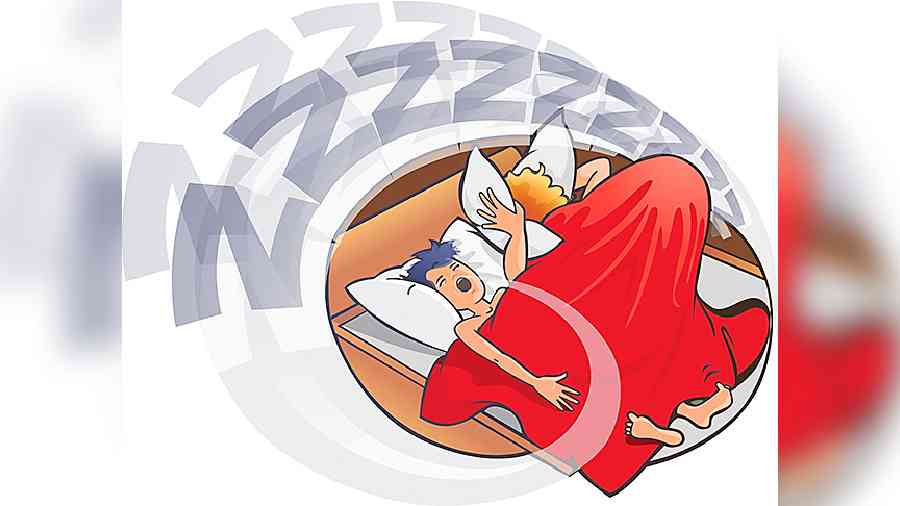Snoring is a rhythmic sound of varying idiosyncratic pitches. It disturbs the sleep of the victim and the partner. About 45 per cent of the population, mainly middle-aged men and post-menopausal women, snores. Children, too, can snore; 10 per cent snores regularly, 25 per cent has SDB (sleep disturbed breathing) and 2 percent has obstructive sleep apnoea (OSA) like adults. They stop breathing for 10 seconds or more several times every night.
Most children snore occasionally, especially if they have nasal congestion, allergies or are exposed to cigarette smoke. Snoring in children should be taken seriously if it is also causing disturbed sleep. Insufficient sleep can lead to fatigue, drowsiness or hyperactivity. Academic performance maybe poor with a lack of concentration. There may be aggression and other behavioural problems. There may be childhood obesity and hypertension.
In adults, snoring can be part of obstructive sleep apnoea (OSA) when the breathing completely stops for 10 seconds or longer at least 10 times during every hour of sleep. The person stops breathing, then partially wakes up with a grunt and starts to breathe again. The sleep is disturbed and not restful.
Often, the person also suffers from daytime drowsiness, cannot concentrate, expresses frustration and anger at minor occurrences, and may regularly have a headache or sore throat on awakening. Eventually, OSA can lead to high blood pressure and chest pain. It can cause people to doze off while driving and lead to accidents. Although snoring is more likely in men and in older women, it can occur in younger age groups. This may be because the airways are congenitally narrow, or the person has abnormalities in the airways like a deviated septum, a thick uvula or palate. This may be hereditary, and there may be a family history of snoring. Alcohol relaxes the throat muscles so that snoring is more likely after a bout of drinking. Breathing is inefficient in overweight people. Also, the throat may be thick with fat, mechanically obstructing breathing.
Some simple lifestyle changes can help stop snoring:
- Maintain ideal body weight. (Weightdivided by height in meter squared or BMI should be equal to 23)
- Do a combination of 30 minutes ofaerobic activity and 10 minutes of deepbreathing (pranayama) every day
- Keep your nasal passage clear. Usesaline drops at bedtime. Take steam inhalations every day. Avoid exposure to allergens, especially wide-spread ones such as camphors,agarbattis,vapourisingmosquito repellents and cigarette smoke
- Elevate the head of the bed
- Sleep on your side. (Sleeping on your back aggravates snoring.) Take a tennis ball and tie it to your back. That will prevent you from rolling over in your sleep
- Sleep at least seven hours a night.
Try these measures for two to three months. If there is no improvement, you need to consult a physician. There are professionals who specialise in the diagnosis and treatment of snoring. You may need to spend a night in a sleep lab so that they can figure out precisely what is happening.
Sometimes, especially with OSA, continuous positive airway pressure (CPAP) machine may be needed. This uses an air pump to move air through a nasal mask. Oral devices can be fitted and put in before bedtime to keep your tongue and jaw in place.
In children, if snoring is proven to be due to airways obstructed with enlarged tonsils or adenoids, surgery can be helpful. Tonsillectomy should not be taken lightly as the tonsils are the body’s first line of defence against respiratory infections.
The writer has a family practice at Vellore and is the author of Staying Healthy in Modern India. If you have any questions on health issues please write to yourhealthgm@yahoo.co.in











